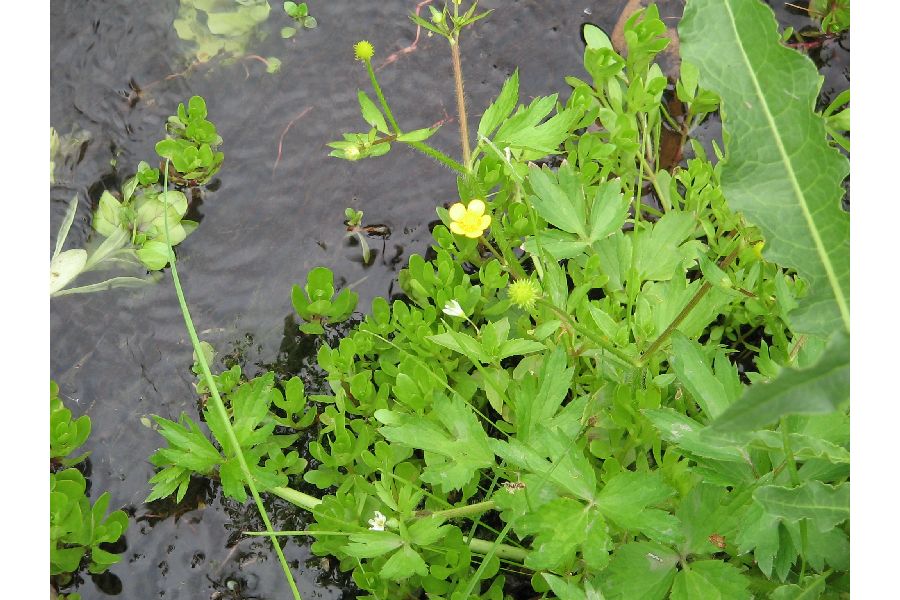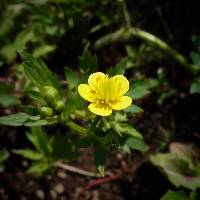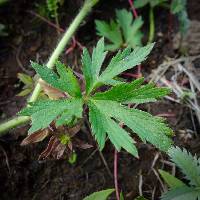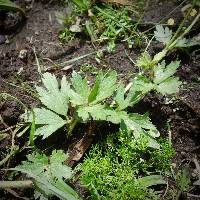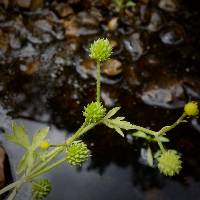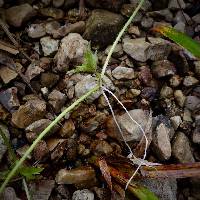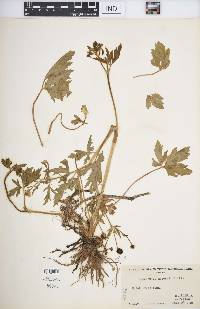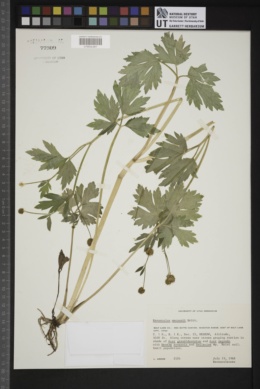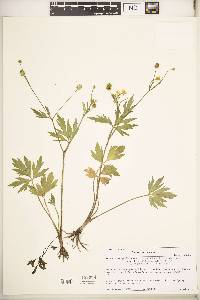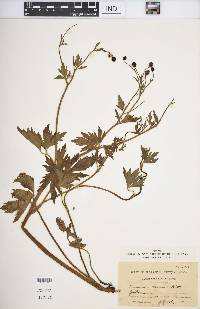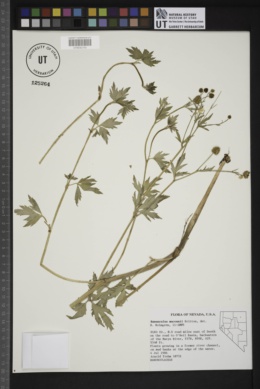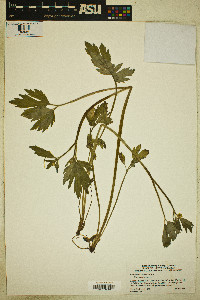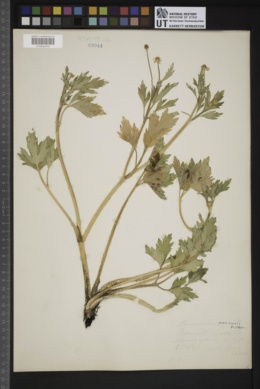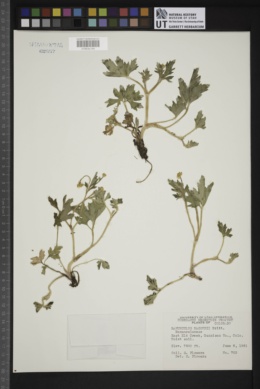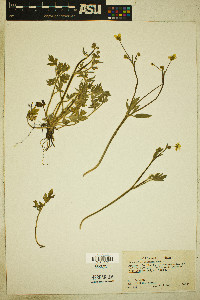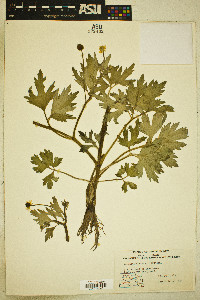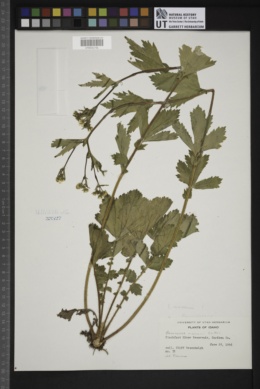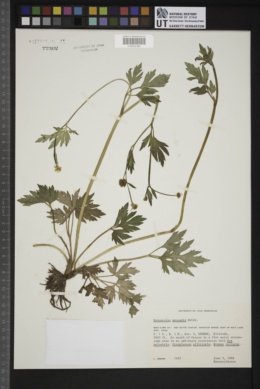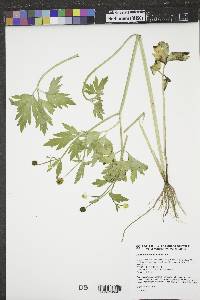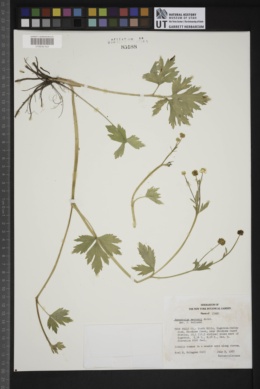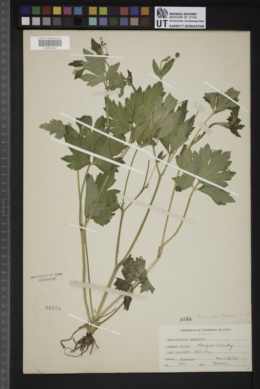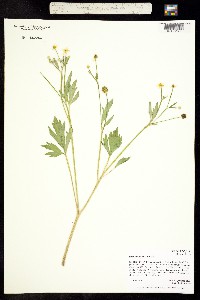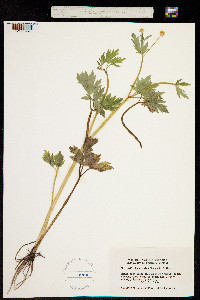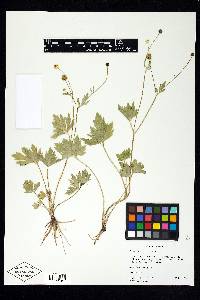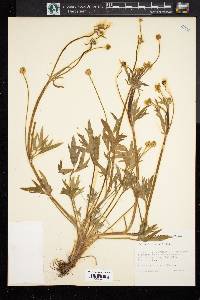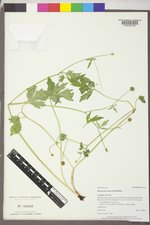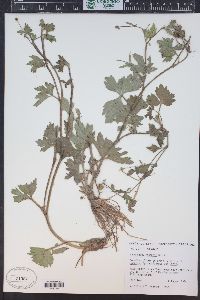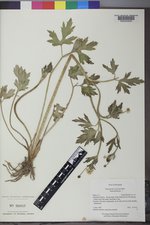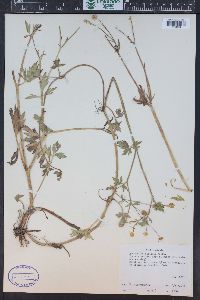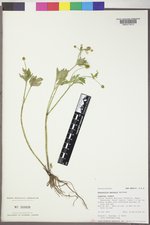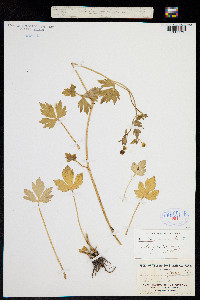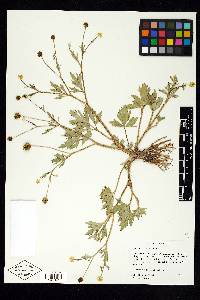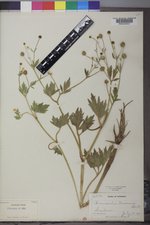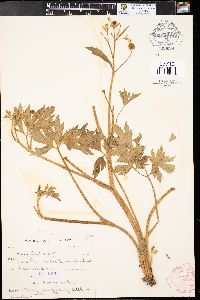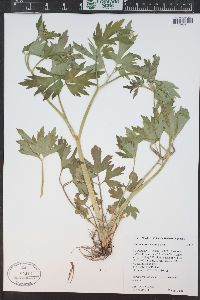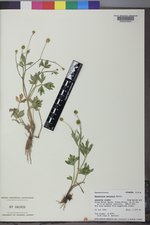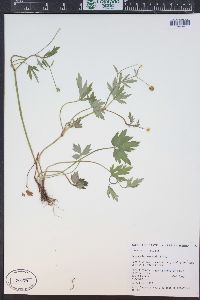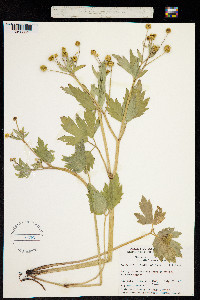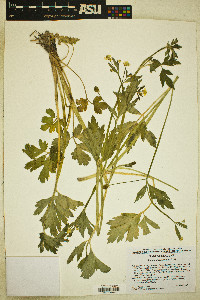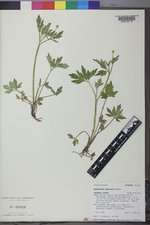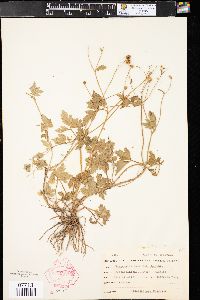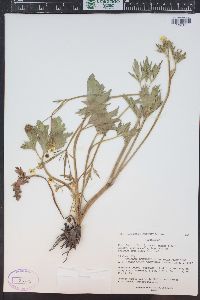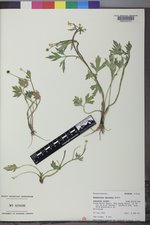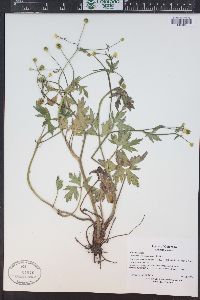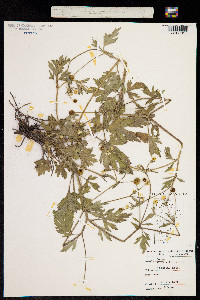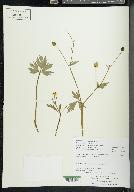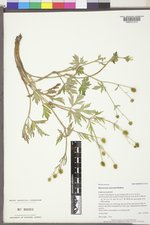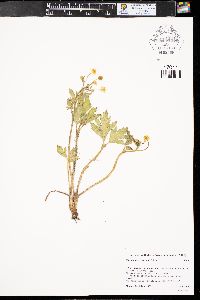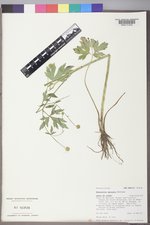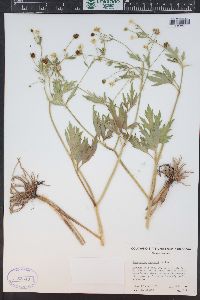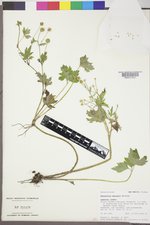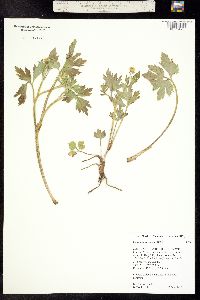Ranunculus macounii
|
|
|
|
Family: Ranunculaceae
Macoun's Buttercup, more...Macoun buttercup
[Ranunculus macounii var. macounii, moreRanunculus macounii var. oreganus (A. Gray) Davis] |
Stems prostrate to nearly erect, often rooting nodally, hirsute or glabrous, base not bulbous. Roots never tuberous. Basal leaf blades cordate to reniform in outline, 3-foliolate, 3.7-7.5 × 4.5-9.5 cm, leaflets 3-lobed or -parted, ultimate segments elliptic or lance-elliptic, margins toothed or lobulate, apex acute to broadly acute. Flowers: receptacle hirsute; sepals spreading or reflexed ca. 1 mm above base, 4-6 × 1.5-3 mm, glabrous or hirsute; petals 5, yellow, 4-6 × 3.5-5 mm. Heads of achenes globose or ovoid, 7-11 × 7-10 mm; achenes 2.4-3 × 2-2.4 mm, glabrous, margin forming narrow rib 0.1-0.2 mm wide; beak persistent, lanceolate to broadly lanceolate, straight or nearly so, 1-1.2 mm. 2 n = 32, 48. Flowering spring-summer (May-Sep). Meadows, depressions in woodlands, ditches, edges of streams and ponds, on wet soil or emergent from shallow water; 0-2900 m; Alta., B.C., Man., Nfld., N.W.T., Ont., Que., Sask., Yukon; Alaska, Ariz., Calif., Colo., Idaho, Mich., Minn., Mont., Nebr., Nev., N.Mex., N.Dak., Oreg., S.Dak., Utah, Wash., Wyo. Through most of its range, Ranunculus macounii has conspicuously hispid herbage. Glabrous plants are found, however, in the lower Columbia River valley (southwestern Washington and adjacent Oregon). This variant has been called R . macounii var. oreganus .
Duration: Perennial Nativity: Native Lifeform: Forb/Herb General: Perennial, 20-100 cm tall; stems prostrate to nearly erect, often rooting at the nodes, hirsute or glabrous; roots never tuberous. Leaves: Basal and cauline, alternate, basal blade cordate to kidney-shaped in outline, trifoliate, 3.7-7.5 cm long, 4.5-9.5 cm wide, the leaflets 3-lobed or 3-parted, the ultimate segments elliptic or lance-elliptic, cauline blades similar, hirsute, margins toothed to minutely lobed; petiole 5-20 cm long. Flowers: Inflorescence a cyme, 3-7 flowered; pedicels appressed- pubescent; sepals 5, 3-7 mm long, pilose externally; petals 5, 4-9 mm long, yellow; nectary scale glabrous; flowers April-August. Fruits: Achene, numerous, arranged in a globose or ovoid head, 7- 11 mm long, 7-10 mm wide, the achene body 2.4-3 mm long, glabrous, the beak straight or nearly so, 1-1.2 mm long. Ecology: Pine forests, meadows, streambanks, ditches, pond and lake margins, wet soils, or emergent from shallow water; 300-2700 m (1000-9000 ft); Apache, Coconino, Gila, Greenlee, Maricopa, Navajo, and Yavapai counties; Canada, north-central, western, and southwe Notes: Ranunculus pensylvanicus (Pennsylvania buttercup) is very similar to R. macounii, but the petals are smaller (2-4 mm long); and the head of the achenes is cylindric, 9-12 mm long, 5-7 mm wide. Ranunculus uncinatus (woodland buttercup) is differentiated by its erect stems, these never rooting at the nodes; basal blades are 3-parted to sometimes trifoliate, margins of the ultimate segments toothed or crenate-toothed; petals are 5, 2-6 mm long, yellow; and the beak of the achene is hooked. It occurs in meadows, wooded sites, and streambanks. Ranunculus fasciculatus (Arsene-s buttercup) [=R. macranthus] has erect to decumbent stems; leaves are mostly trifoliate, ovate to deltate in outline, margins of the ultimate segments toothed; petals are 11-16, 8-21 mm long, yellow; and the beak of the achene is straight. It occurs on the southern periphery of our range, along lakes, ponds, and streams. Ranunculus sceleratus (cursed buttercup) is an annual, erect, rarely rooting at the lower nodes; leaves are kidney-shaped to circular in outline, 3-parted, 1-5 cm long, 1.6-6.8 cm wide, the ultimate segments again parted or lobed, the margins deeply crenate to minutely lobed; petals are 3-5, 2-5 mm long, yellow; the head of achenes is ellipsoid to cylindric, 5-13 mm long, 3-7 mm wide; and achenes are 1-1.2 mm long, the beak straight. It occurs in wet soils or shallow water, often along lake and pond margins. Ours is var. multifidus. Synonyms: Ranunculus macounii var. oreganus Editor: Springer et al. 2008 Much like no. 5 [Ranunculus pensylvanicus L.f.], but sometimes glabrous, the stems widely branched and sometimes rooting from the lower nodes; pet 3.5-5 mm, equaling or commonly longer than the sep; fruiting heads mostly 7-12 mm, ovoid-cylindric; achenes 2.7-3.3 mm; beak triangular- subulate, 0.8-1.8 mm; 2n=32. Marshes and wet meadows; Lab. to Alas. and e. Asia, s. to Que., n. Mich., Io., and Ariz. June-Aug. Gleason, Henry A. & Cronquist, Arthur J. 1991. Manual of vascular plants of northeastern United States and adjacent Canada. lxxv + 910 pp. ©The New York Botanical Garden. All rights reserved. Used by permission. |

